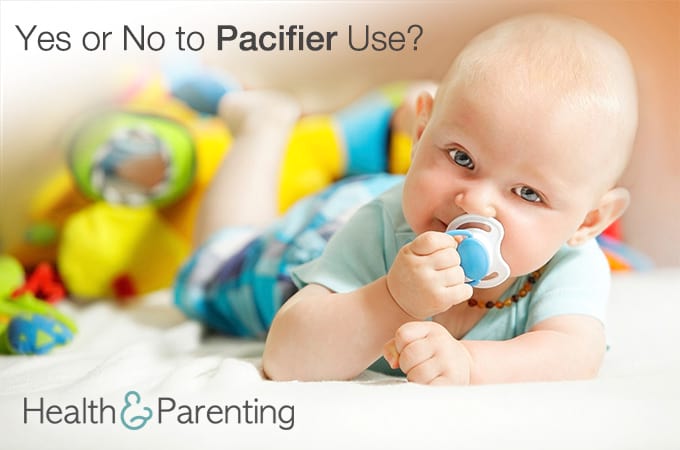When it comes to baby care, you might get a lot of conflicting information. For example, you may have heard both sides of the pacifier debate. Keep in mind, like many things in life, there are pros and cons to using a binky.
You probably know babies have a natural need to suck and a pacifier may soothe your little one in-between feedings. If your baby is still fussy after nursing, burping and cuddling, a pacifier may help him settle down.
The same thing does for thumb sucking. Similar to a pacifier, thumb sucking can comfort your baby. Some parents prefer to substitute a pacifier for thumb sucking since it gives them a little more control. For example, with a pacifier, you can take it away when you’re trying to wean your child from using one. If your baby sucks his thumb, it’s always right there, which gives you less control when you are trying to break your little one of the habit.
One benefit of using a pacifier is the possible decreased risk of SIDS. The exact reason pacifier use appears to reduce SIDS is not clear. But since studies do show a link between pacifier use and decreased rates of SIDS, the American Academy of Pediatrics (AAP) recommends babies use a binky through the first year of life when they are sleeping. Keep in mind, if your baby does not want to take a pacifier, don’t force the issue.
Cons of Using a Pacifier
Research is mixed on whether introducing a pacifier too early interferes with breastfeeding. But it makes sense to wait until your baby gets the hang of nursing and you have good milk flow before using a pacifier.
Another possible negative to using a pacifier is your baby could become dependent on one. If your baby’s binky falls out at 2 a.m., it may mean you’re running into her room to put it back.
If you are concerned thumb sucking or using a pacifier may damage permanent teeth, talk to your pediatrician to make sure it won’t interfere with dental health. In most cases, if you break your baby of the binky habit by about age two, you probably don’t have anything to worry about.
Some studies also indicate pacifier use may increase the risk of middle ear infections. The risk of infections is lower in young infants. So giving your baby a binky until he is about six months old and then weaning him may be an option.
Pacifier Use Tips
If you do decide to use a binky, moderation is key. It may be best to avoid giving the pacifier after every whimper. Your baby can become overly dependent on it and you may have a battle on your hands when it comes time to give up the binky.
Also, never tie a pacifier around your baby’s neck with a ribbon or string. The string can become wrapped around her neck.
Don’t substitute a pacifier for parent provided comfort. Of course, there will be times when you need a few minutes before you can tend to your baby, such as when you’re driving or need to use the bathroom. Using a binky to buy a few minutes in those instances can be helpful.
Written by MaryAnn DePietro @ writerlady34
This information is not intended to replace the advice of a trained medical doctor. Health & Parenting Ltd disclaims any liability for the decisions you make based on this information, which is provided to you on a general information basis only and not as a substitute for personalized medical advice. All contents copyright © Health & Parenting Ltd 2016. All rights reserved.










